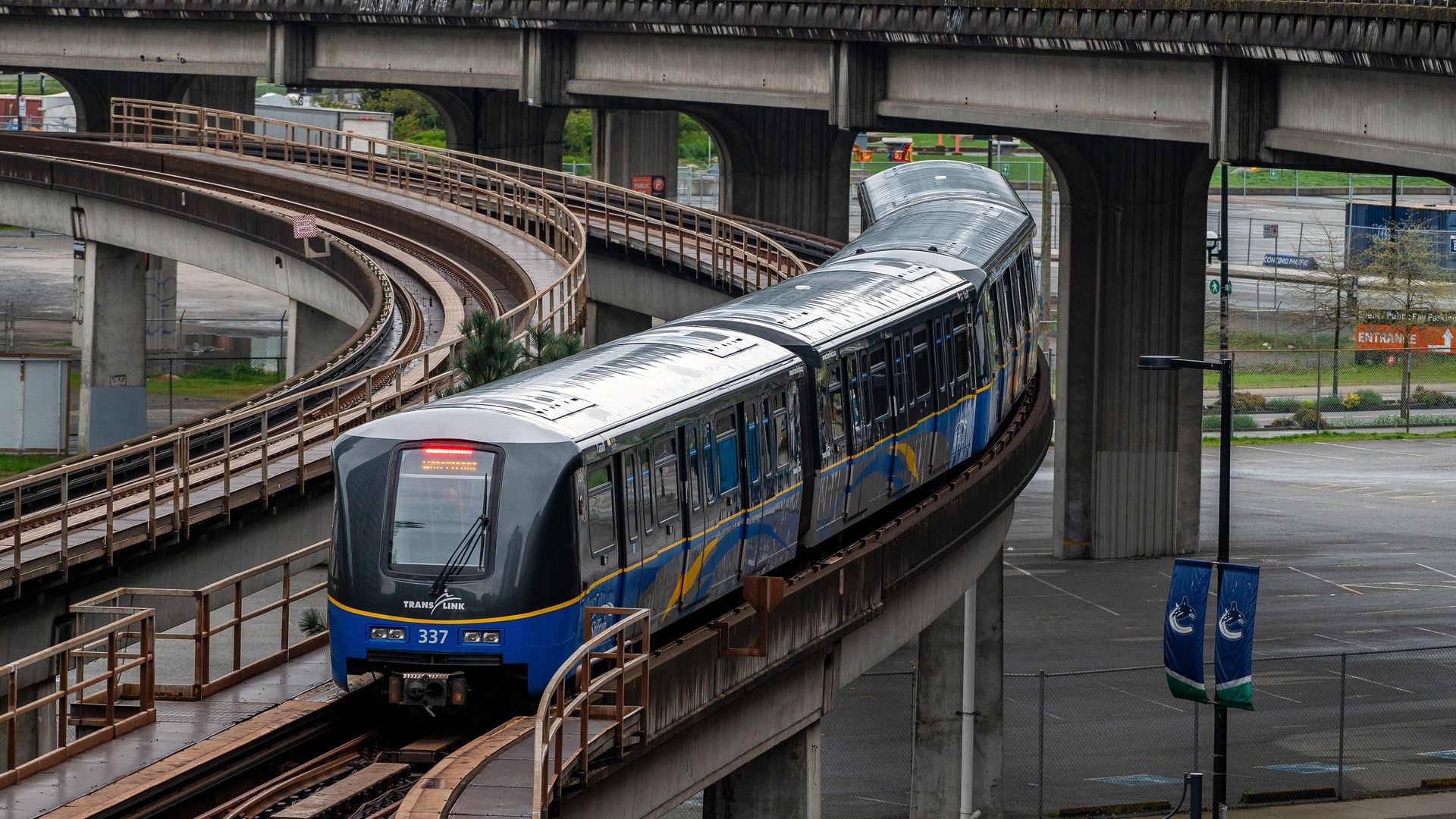
SkyTrain in Vancouver, B.C., was the inspiration for the rejected ValTrans plan. Photo: James MacDonald/Bloomberg via Getty Images
The advent of light rail in the Valley was delayed by nearly 20 years due to voters' rejection of a proposed mass transit system known as ValTrans.
Why it matters: Former Phoenix Mayor Terry Goddard tells Axios that growth patterns in the Valley would've been significantly different if ValTrans had passed, with less sprawl and more housing concentrated along the rail lines.
Flashback: When lawmakers originally gave their blessing to the transportation sales tax that came to be known as Proposition 400, they cleaved the proposal into two separate ballot measures — a half-cent sales tax for roads and highways, which voters approved in 1985, and another half-cent for a mass transit plan that went to voters in a 1989 special election.
- ValTrans would have created a 103-mile elevated rail system in the Valley, modeled on Vancouver, British Columbia's SkyTrain. ValTrans even hired the person who built SkyTrain to design the proposed system.
- The plan also included 1,500 new buses and a commuter train between Chandler and downtown Phoenix, along with $300 million in freeway improvements.
What happened: Maricopa County voters overwhelmingly rejected the proposal, defeating it by a nearly 2-to-1 ratio.
Between the lines: Proponents touted ValTrans as a way to lessen reliance on cars and reduce pollution while providing new public transportation options.
- Critics labeled it a boondoggle that would be too expensive, too ineffective and too complicated.
- Goddard, a leading advocate, said that legislative opponents who succeeded in splitting the two transportation measures made ValTrans "the biggest, sourest pill they could possibly make it."
What they're saying: ValTrans was "the one that got away," he said.
- "We lost 35 good years or 30 good years of developing around a different pattern."
- Marty Shultz, who worked on the pro-ValTrans campaign, took a different view, telling Axios Phoenix the philosophy that created the sprawl wouldn't have changed. "The Valley was, I think, always destined to be large."
The big picture: In 2000, Phoenix voters in 2000 approved the framework for the current light rail network, which opened in 2008.
Go deeper: Uncertain light rail expansion forces Valley officials to consider other mass transit options

Get more local stories in your inbox with Axios Phoenix.
More Phoenix stories
No stories could be found

Get a free daily digest of the most important news in your backyard with Axios Phoenix.
